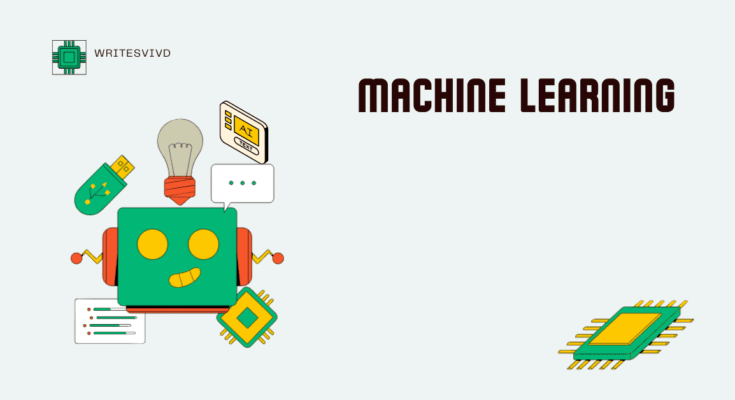Introduction to Machine Learning and AI
Optimizing Machine Learning Jobs in 2024: A Complete Guide are two of the most exciting and in-demand fields in technology today. With the rapid advancement of technology, the demand for professionals skilled in machine learning and AI is at an all-time high. In this section, we will explore what machine learning and AI are, their applications, and how you can get started in these fields.
What is Machine Learning?
Machine learning is the process of training an algorithm on data to make predictions or decisions. It involves feeding a machine learning algorithm with a large amount of data, and then using that data to predict outcomes or make decisions based on new input. This process allows the algorithm to learn from the data and improve its accuracy over time.
Types of Machine Learning
There are three main types of machine learning: supervised learning, unsupervised learning, and reinforcement learning. Each type has its own unique applications and methods of training algorithms.
What is AI?

Artificial Intelligence (AI) is the broader concept of machines being able to carry out tasks in a way that we would consider “smart”. Machine learning is a subset of AI that focuses on the development of computer programs that can teach themselves to grow and change when exposed to new data.
Deep Learning and Generative AI
Deep learning is a subset of machine learning that uses neural networks to approximate complex functions. Generative AI, on the other hand, focuses on the creation of new data, such as images, text, and music, using AI algorithms.
Tools and Platforms for Machine Learning Jobs
There are several tools and platforms that are essential for anyone interested in pursuing a career in machine learning. These tools and platforms help professionals to develop, deploy, and manage machine learning models efficiently. Let’s take a look at some of the most important tools and platforms for machine learning jobs:
1. Amazon SageMaker
Amazon SageMaker is a fully managed service that provides developers and data scientists with the ability to build, train, and deploy machine learning models quickly and effectively. It offers a wide range of built-in algorithms, as well as the flexibility to use your own algorithms. SageMaker also provides powerful tools for data labeling, model training, and model hosting.
2. TensorFlow and Keras
TensorFlow and Keras are popular open-source machine learning frameworks that are widely used for building and training machine learning models. TensorFlow provides a flexible ecosystem of tools, libraries, and community resources, while Keras offers a high-level, user-friendly interface for building neural networks.
3. PyTorch
PyTorch is another open-source machine learning library that is known for its dynamic computation graph and seamless model deployment. It is widely used for developing deep learning applications and has a strong community of developers and researchers.
4. Scikit-learn
Scikit-learn is a simple and efficient machine learning library for building predictive models. It provides a wide range of algorithms for classification, regression, clustering, and dimensionality reduction, making it ideal for beginners and experienced professionals alike.
5. Amazon Web Services (AWS)
Amazon Web Services offers a comprehensive suite of cloud-based tools and services for machine learning and AI. AWS provides a scalable and secure platform for deploying machine learning models, as well as resources for training models on large datasets and automating model deployment.
6. Generative AI and NLP Tools
Generative AI tools, such as GANs (Generative Adversarial Networks) and NLP (Natural Language Processing) frameworks, are essential for creating new data and generating human-like text. These tools are used in a wide range of applications, including image generation, text synthesis, and language translation.
Types of Machine Learning
Machine learning is a complex field with various types of approaches to training algorithms. Understanding the different types of machine learning is essential for anyone looking to pursue a career in this field. Let’s explore the three main types of machine learning:
1. Supervised Learning
Supervised learning involves training an algorithm on labeled input data to produce an expected output. This type of machine learning is commonly used for tasks such as predicting future events, classifying data, and making recommendations.
2. Unsupervised Learning
Unsupervised learning involves training an algorithm on input data without labeled responses. This type of machine learning is used for clustering and association tasks, where the goal is to discover hidden patterns and structures within the data.
3. Reinforcement Learning
Reinforcement learning involves training an algorithm to make sequential decisions by interacting with an environment. The algorithm learns by receiving feedback in the form of rewards or penalties based on its actions, allowing it to maximize its cumulative reward over time.
Each type of machine learning has its own unique applications and methods of training algorithms, making it important for aspiring machine learning professionals to have a strong understanding of each approach.
Training and Deployment of Machine Learning Models
Training and deploying machine learning models is a critical aspect of pursuing a career in machine learning. Here are the key steps involved in training and deploying machine learning models:
Data Collection and Pre-processing
The first step in training a machine learning model is to collect relevant data and pre-process it. This involves cleaning up the data and formatting it in a way that can be consumed by a machine learning algorithm.
Model Selection and Training
Once the data is pre-processed, the next step is to select a suitable model for training. This may involve selecting from a range of machine learning frameworks and libraries such as scikit-learn, TensorFlow, Keras, and PyTorch. The model is then trained on the pre-processed data.
Testing, Evaluation, and Prediction
After training the model, it is essential to test and evaluate its performance. This step involves measuring the accuracy of the model, making predictions, and refining the model to maximize its accuracy.
Deployment and Maintenance
Once a machine learning model is trained and tested, it can be deployed into production. This involves putting the model into a live environment and continuously updating it as new data becomes available. Tools like Amazon SageMaker are invaluable for efficient model deployment and maintenance.
Key Metrics for Evaluating Machine Learning Models
When evaluating machine learning models, there are several key metrics to consider. These metrics help to assess the performance and accuracy of a model. Some of the key metrics include:
- ROC AOC Curve
- Accuracy
- Precision
- Recall
- F1 Score
- Confusion Matrix
- Mean Absolute Error
- R Squared Error
Understanding and utilizing these metrics is essential for evaluating the effectiveness of machine learning models and identifying areas for improvement.
